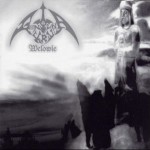From a reputable source, contrasting that which inspires us with that which makes us pity ourselves:
In the movie [The Matrix], the protagonist discovers not only the awful truth about the world, that it is a living nightmare where computers use humans as batteries to power their mechanized metropolis, but that he has powers beyond that of which he has ever dreamed, eventually destroying the matrix and becoming the savior of all humankind.
Thus the truth, while awful, gives the protagonist something wonderful in return: a cause that turns his dreary existence into a glorious fight for freedom against a merciless robotic enemy. This is the notion into which philosophical references to the red pill/blue pill analogy try to tap, the idea that while the truth makes the world seem to be a frightening and draconian place, that the cause of revealing the truth will take on noble characteristics and transform the reader into a persecuted hero. I’ve referred to this idea as a “persecution paradigm” and went into describing it at length in The Burning Blade 13.5.
The basic idea expressed there is that these persecution paradigms play to feelings of alienation and exclusion in the potential convert, making them believe that their suffering has a mysterious and nefarious external cause, and that by defeating those responsible that all can be made well again. The paradigms give the downtrodden convert a sense of purpose, transforming their suffering and other negative feelings into hope and positive feelings. Furthermore, the paradigms make belief systems self reinforcing by bringing the believer into conflict with the world, encouraging them to fight with righteous anger, and confirming their belief that the world is aligned against them when they encounter resistance.
Such persecution paradigms have been wildly successful on the internet in convincing people of all sorts of conspiracy theories and other wild ideas. People seem to love a good secret and long to share it with others, oftentimes arguing vehemently in support of those ideas in chat rooms, forums, and anywhere else they can.
I would like to compare this aspect of the movie “The Matrix” with another movie about a protagonist who is also being crushed by the machinery of an uncaring world: “Brazil,” which I highly recommend. In “Brazil”, the hapless protagonist daydreams that he is a valiant warrior: complete with wings and a sword and shining armor; and in those dreams he fights numerous villains in his quest to rescue his angelic dream girl, who, by contrast in real life, is a lowly and somewhat butch delivery woman. His daydreams make his life more interesting and serve as an escape from his difficult and mind-numbing job, but the protagonist isn’t content to merely just dream about such things, and he tries to make his dreams come true, chasing after his reluctant dream girl and battling real life “villains” in the process.
I won’t spoil the ending, but the contrast between the two movies is quite stark. In “The Matrix”, reality is the dream and the dream is reality and the protagonist is able to escape the bonds of what he thought was real to become something much more than what he was. In “Brazil” the dream is just a dream which the protagonist tries so very hard to make real so that he can escape from the drudgery of his existence, which seems to me to be a more apt analogy for what “Matrix” style allegories and ideologies in general do for people. The way I see it, “The Matrix” is entertainment in the form of a persecution paradigm while “Brazil” is social commentary on what effects such paradigms can have on people. – The Burning Blade
Do you want to create, or try to dominate what already exists?
Do you seek something better, or merely to exclude current problems?
Do you pity yourself, or use yourself as a means to greater ends?
Mr Cameron will attempt to rise above the row, offering a damning analysis of Britain’s moral decline and promising a raft of reforms in response.
Ministers began to set out some of those changes yesterday, signalling moves to end legal anonymity for under-18s accused of rioting. Tougher enforcement would “make life hell” for gang leaders, the Government promised. – The Telegraph
All politics aside, that seems to me the wrong path. You are following the path of victimhood that way, like punk bands complaining about low salaries at their grocery-store jobs.
Your society lacks a direction. You can’t control/discipline/propagandize people who are essentially rotting in disuse.
Metal is the solution to all problems, including shitty movies like The Matrix and boring riots like these Brokeback Islanders torching their local malls. It’s an antidote to a boring, purposeless world.
No Comments




